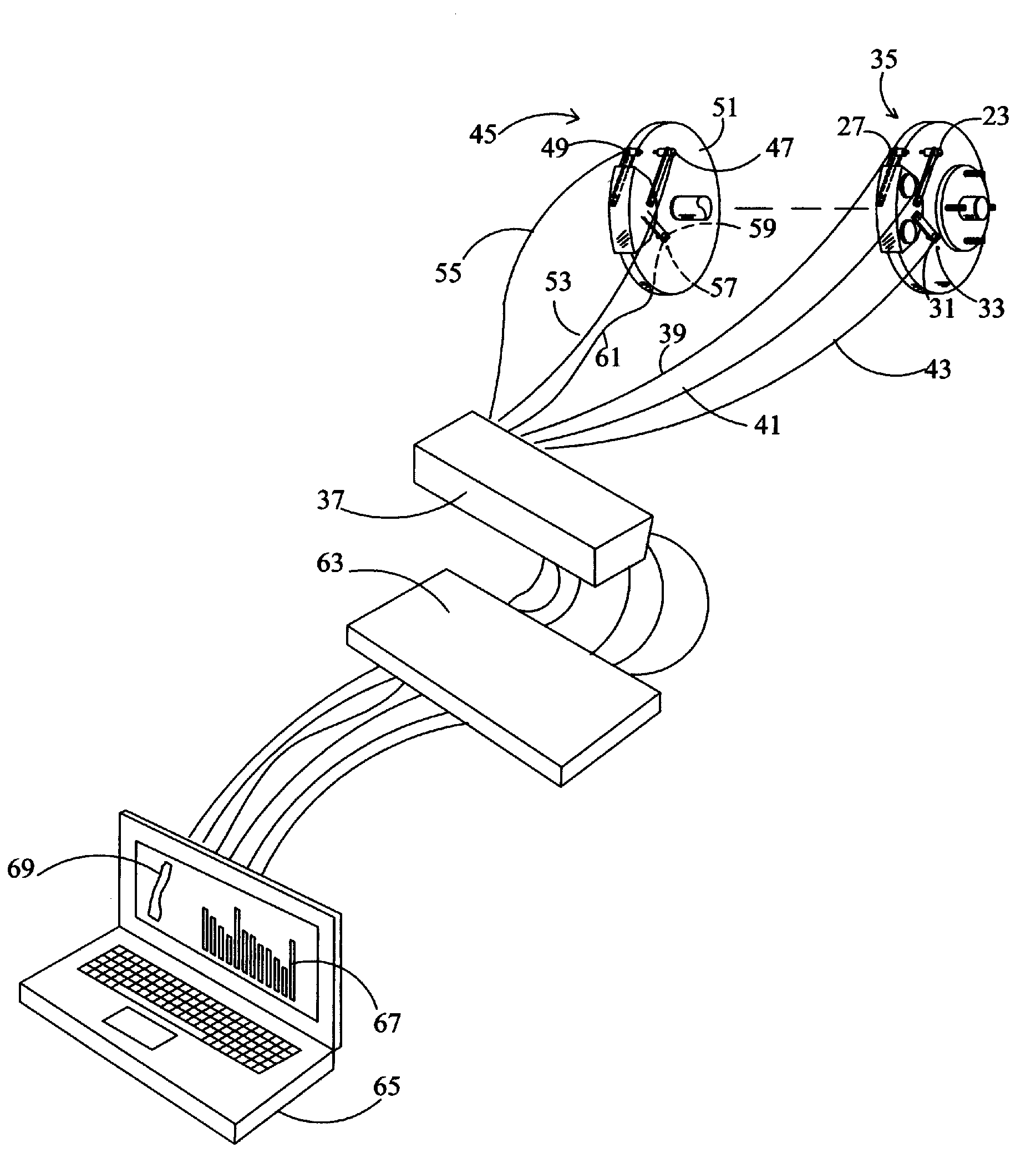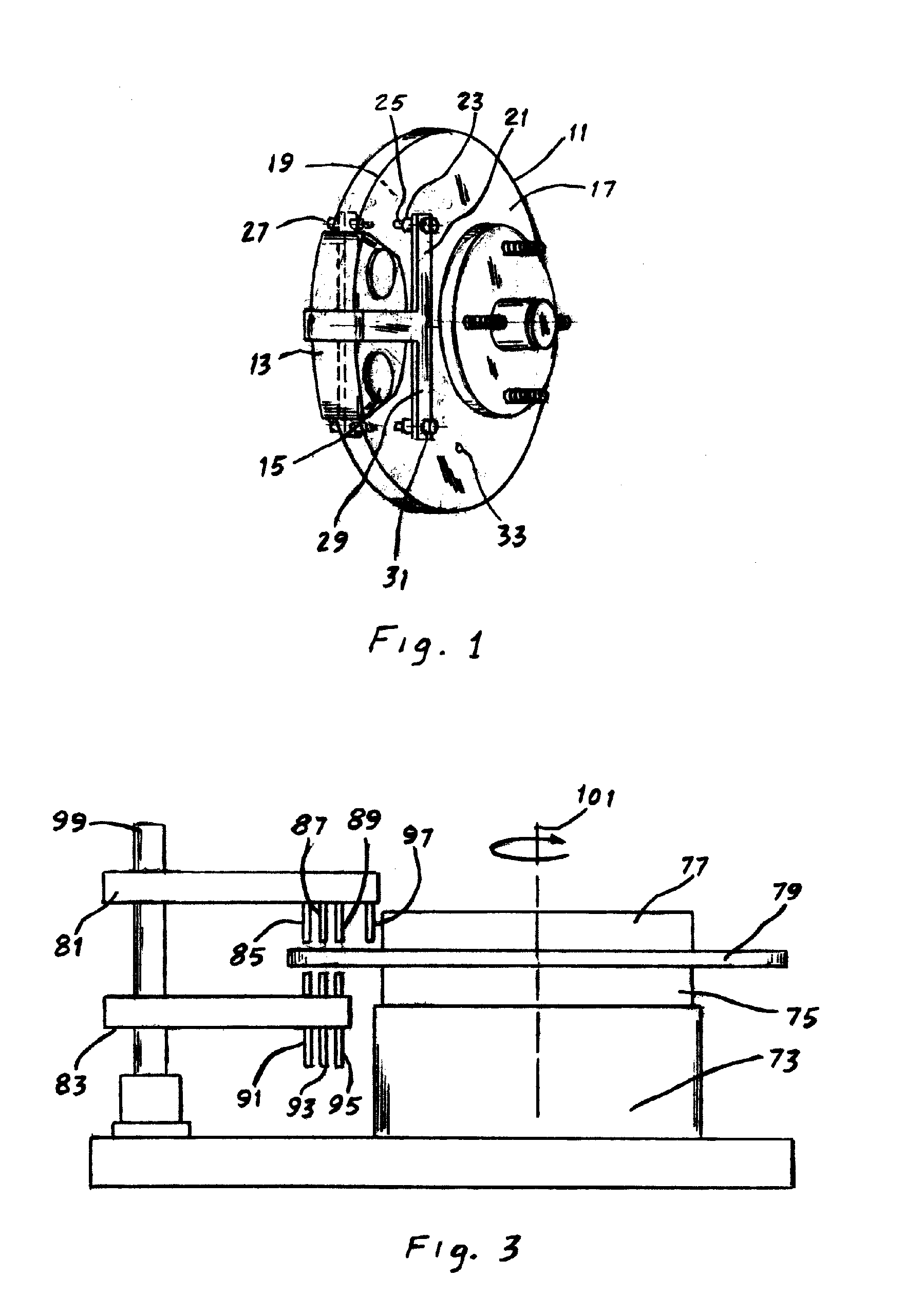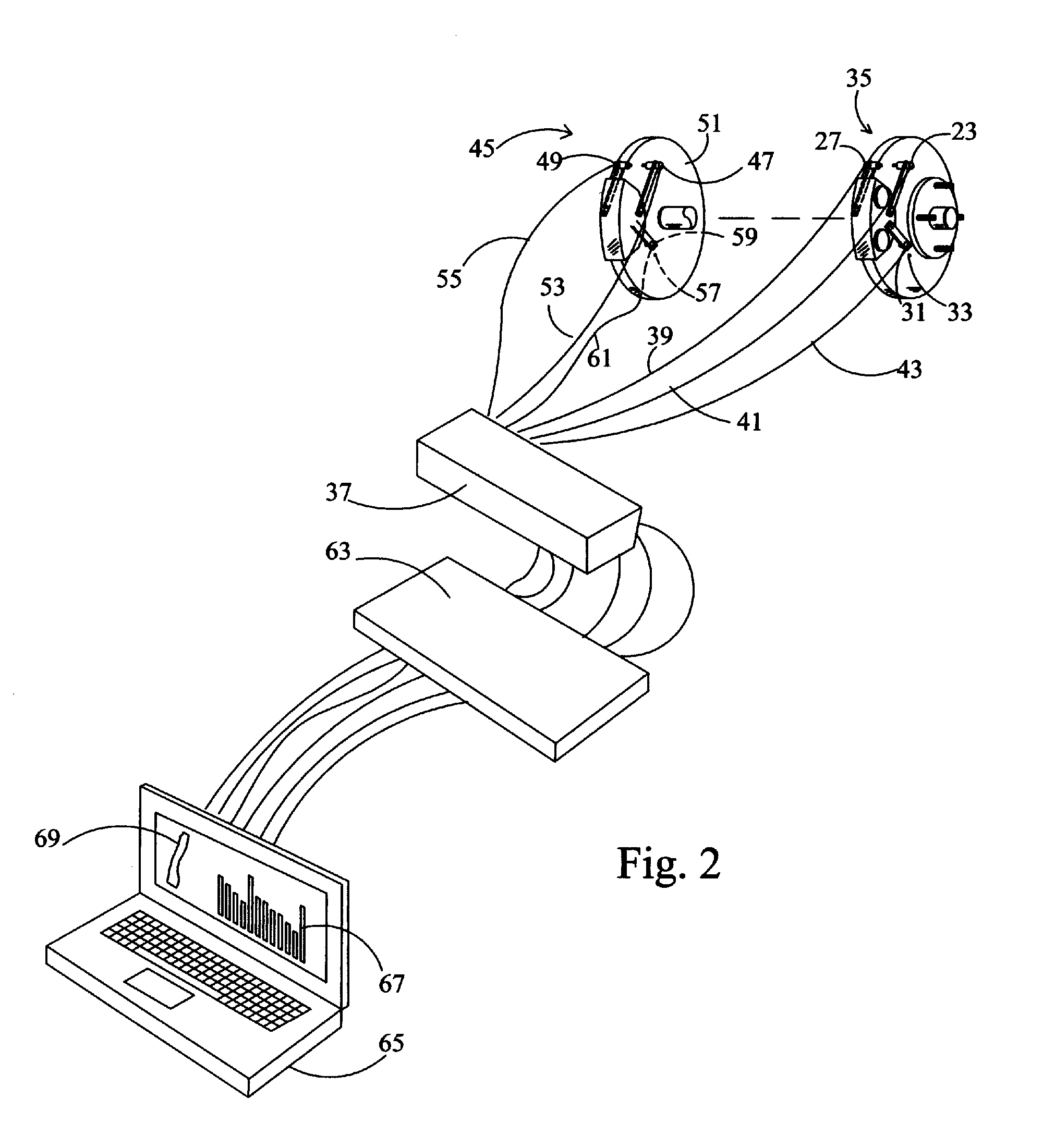Method of evaluating a disc brake rotor
a disc brake and rotor technology, applied in the direction of force/torque/work measurement apparatus, electrical/magnetic measuring arrangement, structure/machine measurement, etc., can solve the problems of excessive rotor wear and other undesirable effects, and affecting the accuracy of the tes
- Summary
- Abstract
- Description
- Claims
- Application Information
AI Technical Summary
Benefits of technology
Problems solved by technology
Method used
Image
Examples
Embodiment Construction
[0024]FIG. 1 is a schematically illustration of a portion of a vehicle wheel and disc brake mechanism wherein a rotor 11 is fixed to and rotatable with a vehicle wheel. The tire and rim of the wheel have been removed from the hub and lugs. A caliper 13 associated with an anchor has retains a pair of rotor engaging friction surfaces or pads located on opposite sides of the rotor 11. The pads are urged into engagement with opposed sides of faces 17 and 19 of the rotor 11 by a pair of hydraulic cylinders (pistons) such as 15. An arm 21 fixed to the caliper housing spans the rotor 11 to support a sensor 23 and probe 25 in a position closely adjacent the rotor surface 17. A similar sensor 27 is similarly mounted closely adjacent the opposite rotor surface 19 in alignment with the sensor 23. The sensors may be mounted to any other convenient non-rotating vehicle member as desired. The sensor probes such as 25 engage the surfaces and the distance between the probes is the thickness of the ...
PUM
 Login to View More
Login to View More Abstract
Description
Claims
Application Information
 Login to View More
Login to View More - R&D
- Intellectual Property
- Life Sciences
- Materials
- Tech Scout
- Unparalleled Data Quality
- Higher Quality Content
- 60% Fewer Hallucinations
Browse by: Latest US Patents, China's latest patents, Technical Efficacy Thesaurus, Application Domain, Technology Topic, Popular Technical Reports.
© 2025 PatSnap. All rights reserved.Legal|Privacy policy|Modern Slavery Act Transparency Statement|Sitemap|About US| Contact US: help@patsnap.com



